A view down Mount Shiromine on the pilgrimage path to temple 81, Shiromine-ji. It is an Important Cultural Property Trove!
W
hew! The night passed so fast! It’s time to say goodbye to my gracious host. She made the place so cozy. I really did not want to leave. But, I had to go because I am getting close to the end of my pilgrimage. A typhoon is on the way! The air is misty. The ground is wet.
I want to visit another temple before I take shelter for the day.

Temple 81, Shiromine-ji, is about 7 kilometers up Mount Shiromine. The forecast is for another hot day. So I am out of the door early.
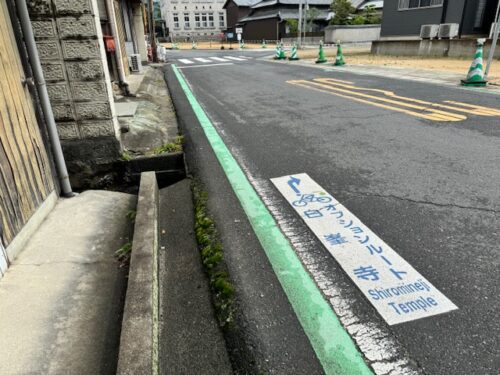
Another mountain
I don’t know what an incoming typhoon looks like. However, I detect change in the weather. It will be interesting to see what that feels like. It is still hot, though.


Sakaide town spreads all over the valley. It is a spectacular sight as the path winds up the mountain.
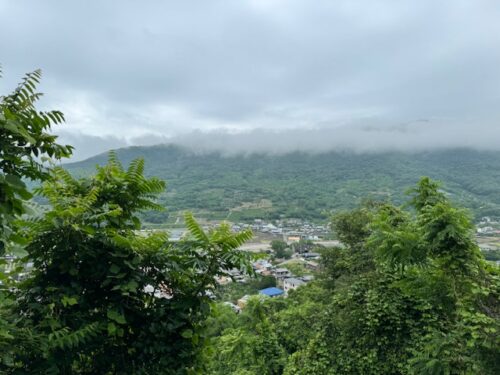
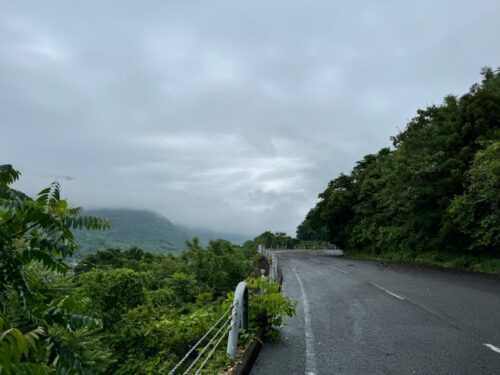

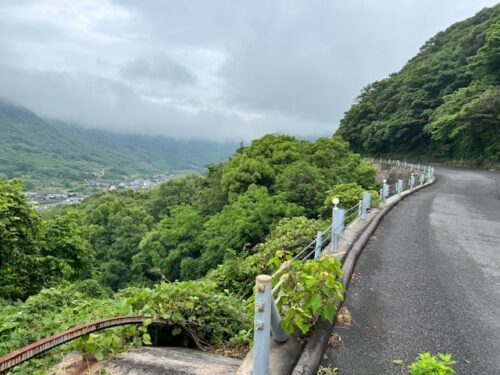


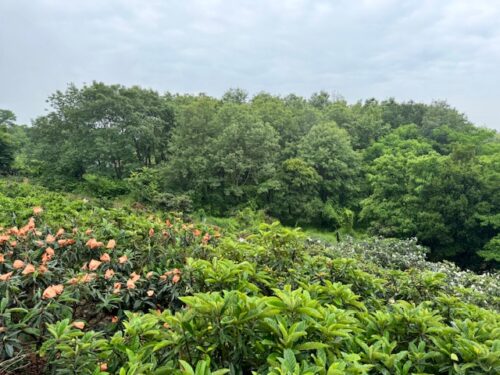
81 Shiromine-Ji
Temple Of The White Peak
The long walk to Shiromine-ji ends halfway up the mountain. Kukai and his nephew, Chisho, founded the temple over 1200 years ago. The entire precinct has a sacred feel and aura.
Almost all of the temple halls on the precinct have been designated as an Important Cultural Property. At one time, there were twenty-one halls. Fire destroyed most of them. Of course, many of the buildings and halls were rebuilt.
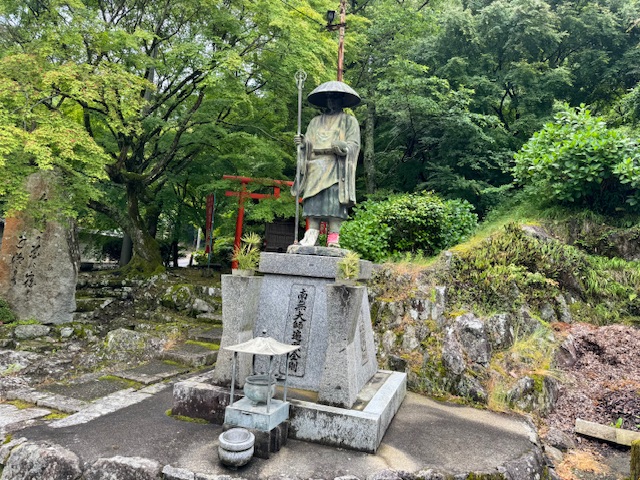
Just outside the temple gate, Kukai welcomes all visitors who have an open heart.
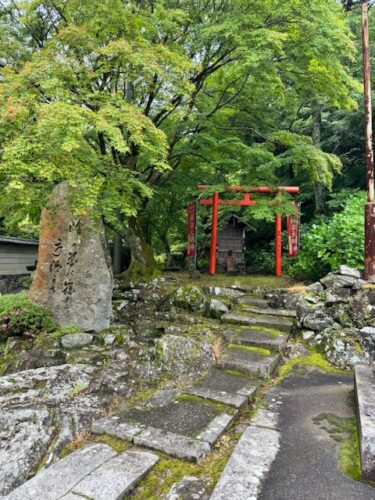
Behind Kukai are stepping stones to Inari Shrine.
Seven gates: Mountain gate
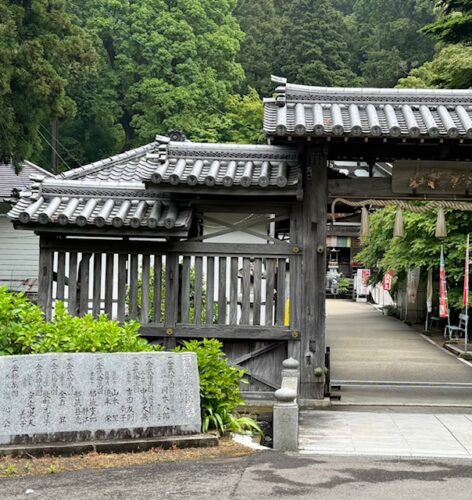
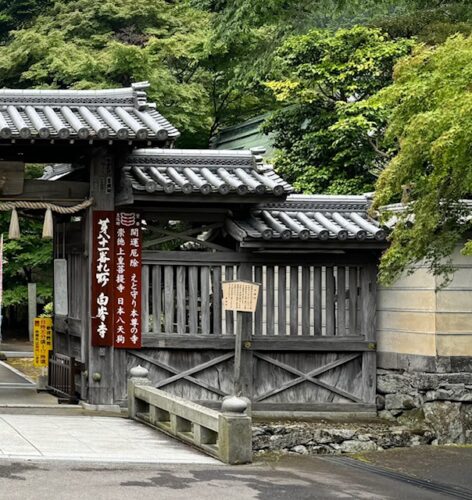
The pilgrimage path from the mountain ends here at the temple’s “mountain gate”, known as the Seven-Kyo-Kado. It is an Important Cultural Property and one of three temple gates on the precinct.
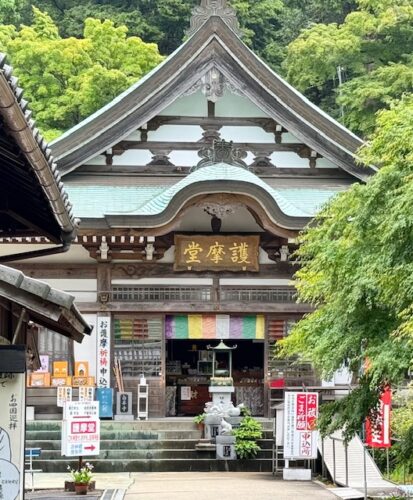
Homado and temple office for goshuin (stamps).

Tonshoji Temple (Worship hall) for Emperor Sutoku. His tomb is near the hall. In the precincts is the Shirakaba Mausoleum, the only emperor’s graveyard on a temple in Shikoku. It is an Important Cultural Property.
An unusual feature and point of interest depending on their beliefs is that visitors can worship the Emperor, God, and Buddha at the Worship Hall.
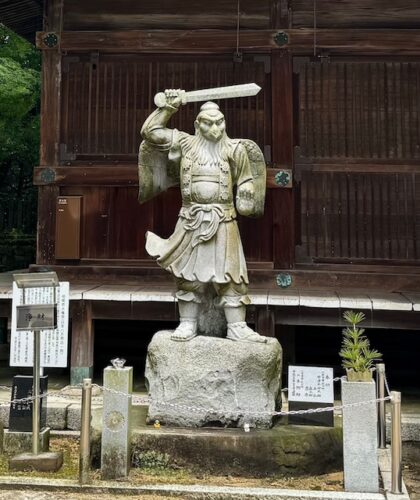
In devotion, Sagamibo, a crow tengu guards the Emperor’s tomb.
Guardian deities of all the zodiac signs are enshrined in temple buildings throughout the precinct.

Ninety-nine steps leading to the Main hall.
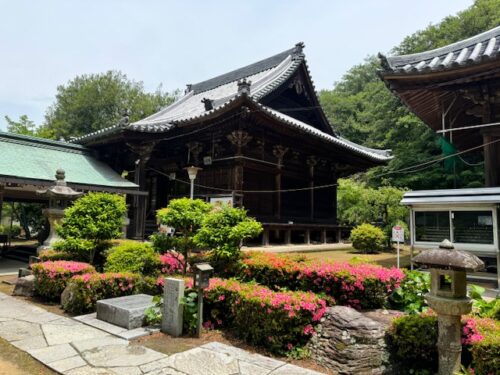
Side view of Main hall.
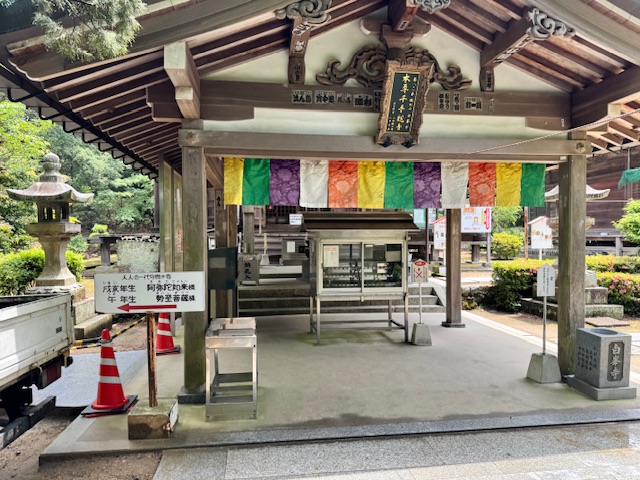
The Main Hall is a designated Important Cultural Property. It has been destroyed by fires more than once. The most recent hall was rebuilt in 1599.

View from Worship hall over to Daishi hall.

Daishi hall is also an Important Cultural Property. Koshin, a blue-faced Kongo who wards off evil and misfortune, is enshrined here.

Gyojado hall is another Important Cultural Property.
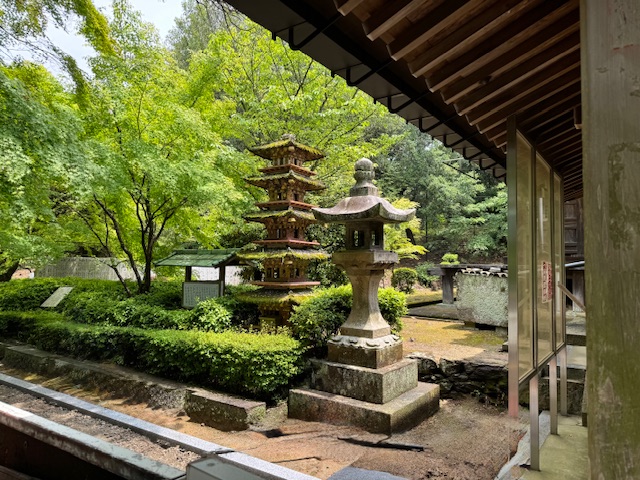

Bell tower.
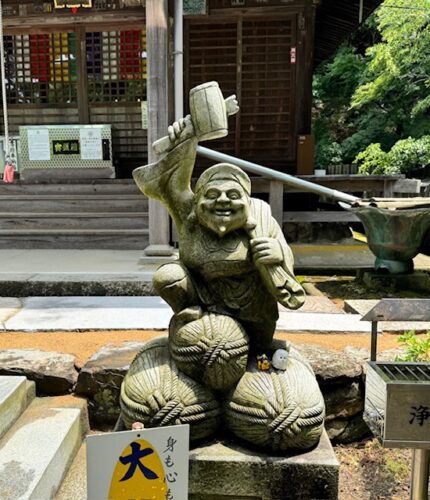
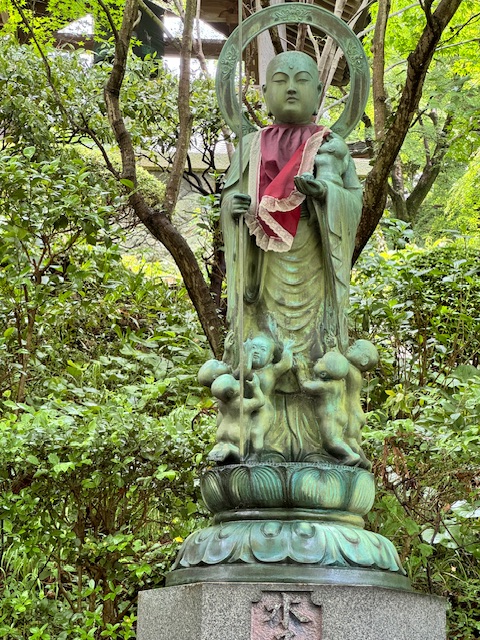
Mizuko Jizo dedicated to deceased children.
What is an Important Cultural Property?
It is a property judged to be of particular importance to the history, arts, and culture of the Japanese people. To protect the cultural heritage of Japan, the Law for the Protection of Cultural Properties was created as a system through which important items are appropriated as such, This imposes restrictions to their alteration, repair and export.

Onarimon Gate (another Important Cultural Property) before the entrance of the guest hall.
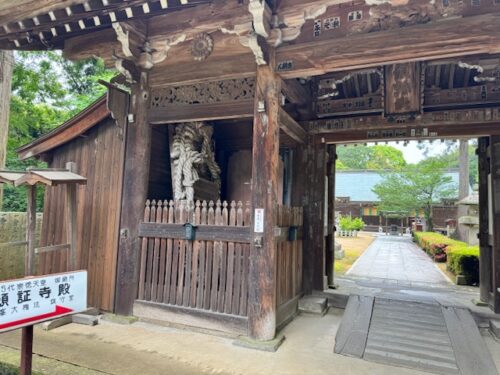
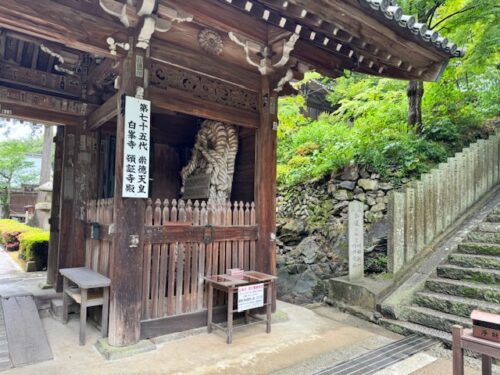
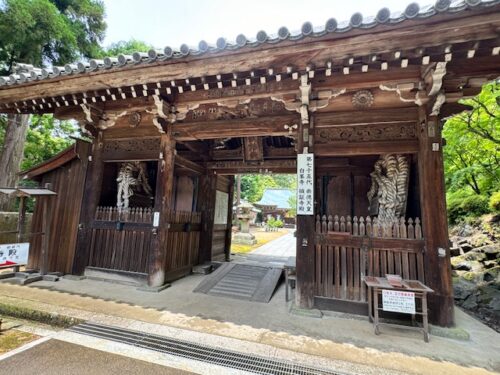
Imperial Envoy Gate, an Important Cultural Property.
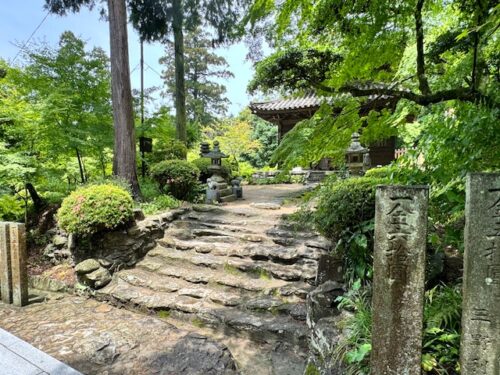

Yakushi-do built in the style of a two-storied pagoda. It houses a kitchen based on Zen Buddhism. The structure is an Important Cultural Property.
Back down the mountain to Sakaide
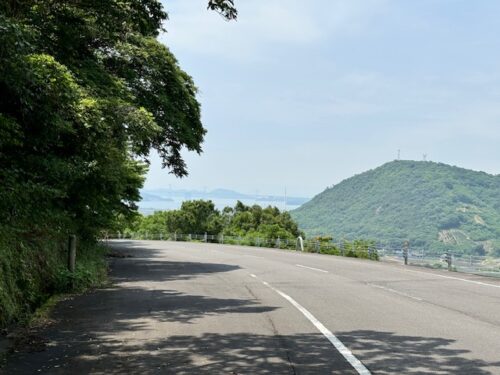
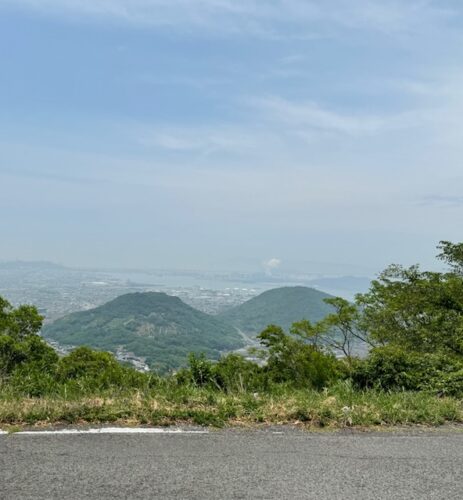
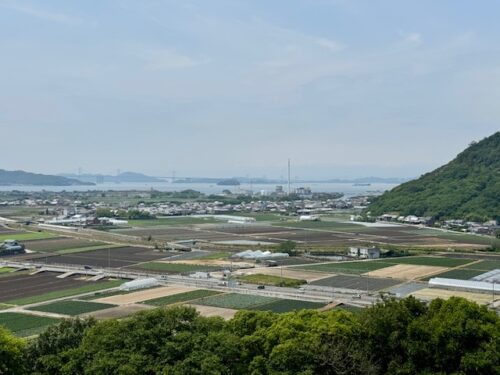
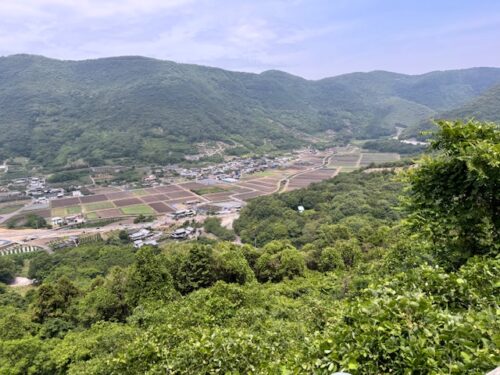
Not an Important Cultural Property!
In Sakaide town, I found the guesthouse that I reserved two days ago. I arrived a little before check-in time. Yes, that is a bench and table next to the house! So, I waited at the back door and rested my weary feet.
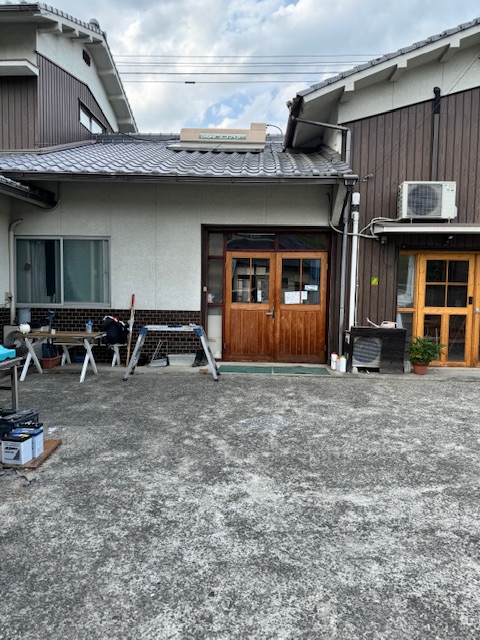
See you next time.
Baadaye and Mata Ne (またね)
Shirley J ♥️
This and several posts this summer will chronicle my pilgrimage in Japan where I am walking the 1200 kilometer-long Shikoku 88 temple pilgrimage. Read my announcement here.

T81
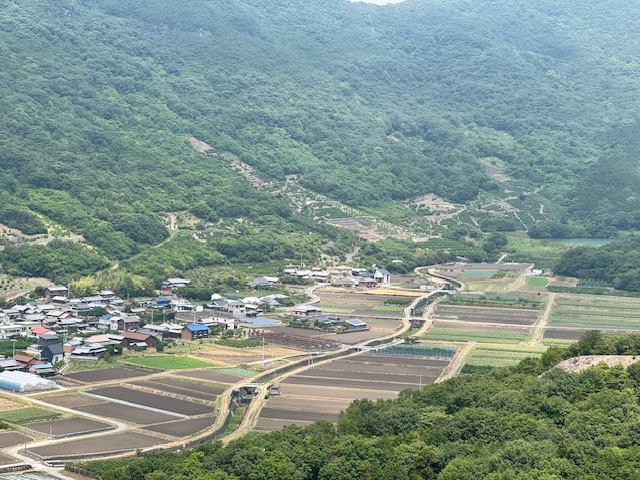
2 thoughts on “🌸 Noire Henro-San: Cultural Property Trove”
Good luck with the typhoon. If the weather is severe, can you extend your stay?
Great question! I don’t know. The Japanese gov’t manages a hotline (posted at airports, ferry ports, etc.) with information for visitors and tourists. It covers accidents, weather events, and for anything where help and advice is needed. If trains or planes are stopped, I don’t believe I would be penalized for overstaying in those circumstances. Amazingly, no one seems to be panicked. I simply do as the locals do.🌸
Comments are closed.